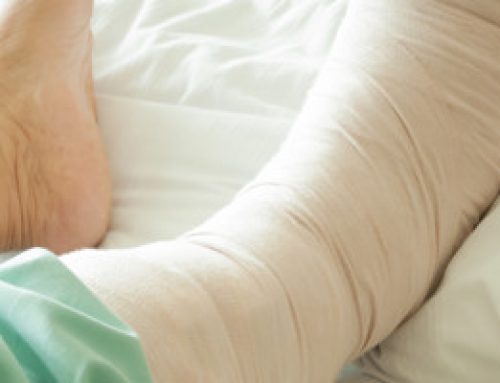Our health is determined by the conditions in which we are born, grow, learn, live, work and age. Strong cross-Sectoral linkages exist between Health and Wellness and all other Living in Niagara Sectors. There is an increasing focus on making a positive impact on people’s lives and the vitality of Niagara through promotion of wellness, prevention of illness, early identification, integration and equitable access to services.
National Context
In Canada over the past 20 years, people are living longer (women 83.6 years and men 79.4 years), fewer teens than ever are smoking, and flu shot rates are up. However, since 1994, diabetes has more than doubled; Canadians’ ratings of both their overall and mental health have declined; 1 in 5 people have a health or activity limitation; and fewer people have a family doctor.
Source: Canadian Index of Wellbeing National Report, 2016
Rating
Health and Wellness
How Niagara is doing in the Health and Wellness Sector in 2017:
3 – Of concern, requires attention
Amount of progress currently being made in the Health and Wellness Sector in Niagara in 2017:
B – Moderate progress is being made
Happening Now
- Between May 2014 and September 2017, the Niagara Mental Health and Addictions Access Line served over 5,790 registered individuals with over 10,900 calls; connected more than 3,000 individuals to a mental health or addictions service provider (over 87% within 1 day); and more than 4,730 callers indicated that they feel better at the end of the call.
- Forty-five people per year die by suicide in Niagara (1 every 8 days). The Niagara Suicide Prevention Coalition provides training in safeTALK (Tell, Ask, Listen and KeepSafe) and ASIST (Applied Suicide Intervention Skills Training).
- The Niagara Dental Health Coalition surveyed 1,334 adult residents who are clients of social service agencies across Niagara in 2017. Sixty-nine per cent of respondents cannot afford to pay for dental care; 30% had not visited a dentist in 3 or more years; and 28% had visited a hospital emergency room, family doctor, or a walk-in clinic for dental emergencies.
- The Niagara Falls Community Health Centre and the Centre de sante communautaire in Welland offer the 10-week Caring for My COPD (Chronic Obstructive Pulmonary Disease) program. In the Hamilton Niagara Haldimand Brant Local Health Integration Network (HNHB LHIN) area, 1 in 10 people over age 35 has COPD; and difficulty breathing due to COPD is a leading cause of emergency department visits and hospitalization.
- Eight of the twelve local municipalities in Niagara are classified as areas of high physician need by the province. While over 70 new family physicians have been recruited to Niagara since 2011, more than 30% of family doctors in the region are over 60 years of age, leading to a focus on succession planning to support primary care renewal.
What’s Emerging
- Implementation of the 2016 Patients First Act by the Ontario Ministry of Health and Long-Term Care is changing planning and delivery of health care services in Niagara. In 2017, the HNHB LHIN began coordinating home and community care; in 2018 modernized public health standards will take effect; and Anchor Tables for the Niagara and Niagara Northwest LHIN Sub-Regions will guide priorities for Sub-Region collaboration.
- Equitable access to health care is being examined by a number of groups, including the Niagara Poverty Reduction Network; the Indigenous Diabetes Health Circle; newcomer service providers; and the HEART project that articulates the views of homeless individuals in Niagara.
- From April 2016 to March, 2017, a total of 3,450 children and youth were referred through Contact Niagara for children’s mental health, developmental and/or autism services.
- Niagara EMS (Emergency Medical Service) is transitioning toward a Mobile Integrated Healthcare (MIH) model that coordinates with other health care sectors and measures impact based on outcomes, rather than the conventional response time model. This includes a Community Paramedic Program to support individuals in Niagara who had been frequently calling 911, to be less reliant on the ambulance system for their primary health care resources.*
- Niagara Health reports a 65% increase in opioid cases presenting in emergency rooms from January to August 2017, compared to the same time frame in 2016. Positive Living Niagara’s StreetWorks program, which distributes Naloxone kits, reports that for the entire year of 2016 there were 147 occasions a kit was used to reverse an overdose, and in the first half of 2017 alone, there were 190 kits reported used in an emergency opioid overdose situation.*
* This information is also reported in the Crime, Safety and Security Sector
Suggested Action Steps
- Support Niagara Opioid Overdose Prevention and Communication Network efforts to address growing numbers of opioid cases in Niagara and raise awareness of harm reduction resources.
- Intentionally build and strengthen partnerships between doctors, nurse practitioners, health sector agencies and community-based agencies, with a focus on promotion of wellness, and prevention of illness.
- Strengthen the business case for the Integrated Community Lead model of care. Incentivize consistency in planning for transitions to services.
- Address ageism in Niagara by shifting the story about older people to a true picture of what it means to grow older in today’s context. Recognize these people as contributors to supporting the health care system and the overall wellbeing of the community.
- Build on work underway to improve access and programming experiences for those children and youth and their families who are seeking mental health supports. Continue to strengthen partnerships between core mental health service agencies for children and youth and other community partners, to implement the provincial Moving on Mental Health plan in Niagara.
Indicators
- Perceived Ratings of Mental Well-Being and Stress
- Obesity Rates in Niagara
- Prevalence Rates of Chronic Conditions in Niagara
- Injury Rates
- Cancer Rates in Niagara
- Number of Specific Health Facilities in Niagara
- Hospital Standardized Mortality Ratio and Hospital Readmissions
- Number of Physicians and Specialists
- Wait Times for Emergency Room Visits, Diagnostic Imaging and Surgeries in Niagara
- Emergency Response Times in Niagara
Lifestyle Indicators in Niagara
- Substance Use Rates
- Physical Activity Rates
- Nutrition Rates
- Dental Health Rates
- Life Expectancy in Niagara
- Low Birth Weight and Mortality of Babies in Niagara
- Teen Pregnancies









